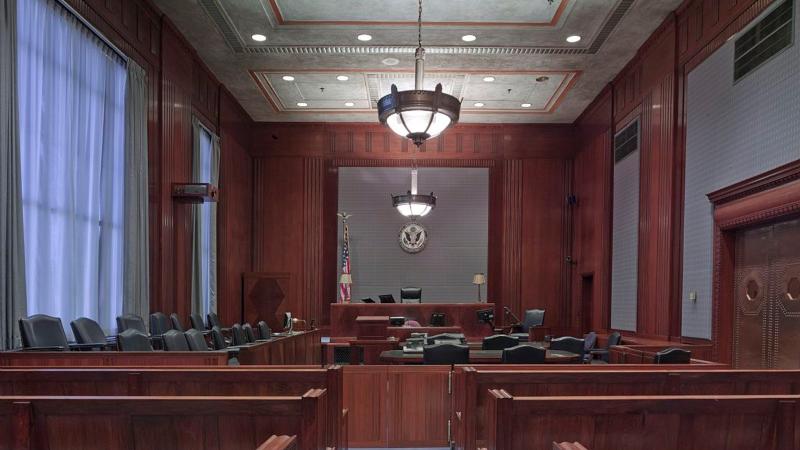At a recent meeting of the Robina Institute’s Probation Revocation Advisory Board there was a presentation and discussion about the work being done in Massachusetts addressing court-ordered conditions of probation and their relationship to probation revocations. In Massachusetts (and nearly every other jurisdiction in the United States) there are myriad conditions of supervision that are court-ordered at the time of sentencing. Some of these conditions of supervision are mandated by law or regulation (e.g. no possession of a firearm). Other conditions are efforts at ensuring a modicum of public safety (e.g. no contact with the victim of their crime, ignition interlocks). Some are related to the adjudicated offense(s) and may require restitution to the victim(s). Conditions can also be deliberately punitive (e.g. fines). There are others are intended to be rehabilitative and based on the perceived mental health needs of the probationer (e.g. drug treatment attendance). And, finally, there are those that are simply ordered because “it’s what we have always done” (e.g. maintain gainful employment, urinalysis). In the end, the conditions of supervision that the probationer must abide by or complete and the probation officer must monitor and enforce will include several conditions inclusive of all the above considerations. The result is a plethora of often unrelated requirements to be abided by or fulfilled that impede the successful completion of a probation sentence. It is not unusual in most jurisdictions to burden the probationer with more than 20 probation conditions. A daunting situation for a well-resourced individual. A nearly impossible predicament for most probationers.
Before imposing a condition of supervision, I would suggest that it pass a “smell test” based on three questions: Is it realistic? Is it relevant? Is it research-supported?
Realistic
Consider the likelihood that a probationer will successfully complete or abide by an imposed condition while on probation thus avoiding unnecessary technical violations of probation. Some examples of conditions that could be considered unrealistic include, but are not limited to:
- Large dollar amounts of fines, fees, surcharges or other legislatively required payments. This would especially be true if the probationer is unemployed or under-employed and/or has other financial obligations such as child support, medical expenses, etc. Determining one’s ability to pay should occur prior to imposing unreasonable monetary demands.
- Requiring abstinence of someone who has been assessed drug or alcohol dependent. Relapse is a common occurrence and should be expected. Rather than demanding abstinence, it would be better to require successful completion of drug treatment and allow the treatment provider to deal with relapse.
- Expecting no contact with known felons when the probationer lives in a neighborhood with a well-represented felon population.
The capacity of the probation department and the assigned probation officer to effectively monitor, supervise or facilitate the conditions of supervision should be considered. Imposing an inordinate number of conditions on probationers that need to be tracked by a probation officer increases the likelihood that some conditions will be overlooked. Assume that each probationer has 20 or more conditions of supervision and the probation officer has a caseload of 60 probationers. It is not realistic that each of the conditions can be effectively monitored even if the probation officer did not have any other duties (e.g. creating reports, waiting in court, making calls to collateral contacts, dealing with crisis situations, traveling to home visits, spending quality time with probationers). Not being able to monitor and enforce some conditions of supervision risks giving the probationer the message that he/she can “get away” with not following some or any of the conditions. Further, monitoring an excessive number of conditions placed on all probationers creates a risk that more serious violations will not be identified. Finally, consider if the court will violate the probationer if one or more of the conditions imposed is not adhered to or completed. If not, why impose them?
Relevant
Conditions of supervision should account for the probationer’s crime and any assessed deleterious conditions or positive attributes prior to recommending conditions and length of the probationary period. Does the punishment or imposed condition fit the crime? For example, a bad check writer should have different conditions of supervision than a repeat drunk driver. The estimation of an individual’s risk level (risk to re-offend) with an actuarial risk assessment tool that has been validated for the jurisdiction’s population can assist in determining the conditions of supervision and the length of probation supervision. But even with the use of this tool, less egregious crimes should not require unnecessary conditions or lengthy terms of supervision (if supervision is even necessary) that are often imposed based on a presentence investigator’s “this is the way it has always been done” recommendations, a prosecutor’s need for public approval that he/she got an ounce of flesh or an elected judge’s need to appear tough on crime. Further, it is important that conditions of supervision align with the individual’s need for intervention. Submitting to urinalysis tests should not be necessary for someone who has no history of drug abuse. In short, imposed conditions should be evenhanded and thoughtful based on the crime committed and an individual’s circumstances.
Research-supported
Conditions of supervision should encourage probationers to be productive and prosocial community members while also being held accountable for their crimes. Conditions of supervision supported by the research are more likely to facilitate long-term positive change in behaviors and attitudes.
However, the first consideration should be whether a person even needs to be placed on probation. People deemed low-risk with relatively minor crimes may not need to be on probation. The experience of being processed through the criminal justice system may have had enough of a deterrence impact to ensure that he/she will remain crime-free while research would indicate that further involvement with the criminal justice system (including numerous conditions of supervision that disrupt prosocial activities) may have negative results.
Other research-supported considerations may include, but are not limited to:
Maintain rather than disrupt protective factors. One should be cautious when imposing conditions that they do not hinder a probationer’s protective factors like employment, prosocial activities or time with family. As an example, requiring office visits with a probation officer, completion of community service tasks or attendance in programming during work hours may put one’s employment in jeopardy.
Ensure conditions of supervision take into consideration a probationer’s assessed needs in a responsive manner. For example, ordering a woman with a history of being abused by male partners to a substance abuse program that is mixed gender and highly confrontative rather than a program designed to assist women recover from drug addiction while addressing past traumatic events in their lives. The former strategy will likely be a set-up for failed treatment and do more damage than good whereas the latter is responsive to the needs of the probationer.
Allow for swift, certain and proportionate responses to violations and compliance/successes. Behavioral science suggests that responses by justice system to violations or accomplishments must be prompt or as quick as possible to have the greatest impact on behaviors. These responses should also be anticipated and understood (certainty principle) by the probationer to achieve ideal outcomes. Every violation and accomplishment must be met with an anticipated reaction. This eliminates the perception by the probationer or parolee that some violations or achievements have been excused or ignored. In addition to swiftness and certainty, responses must be proportionate to the infraction committed or attainments realized by the probationer or parolee in the form of a graduated approach to improve the perception that responses are fair, just and deserved. Further, research suggests that providing rewards with greater frequency than punishments is a more effective way of encouraging compliance. Finally, we cannot assume that what is punishing or rewarding for one probationer is equally punishing or rewarding for another.

